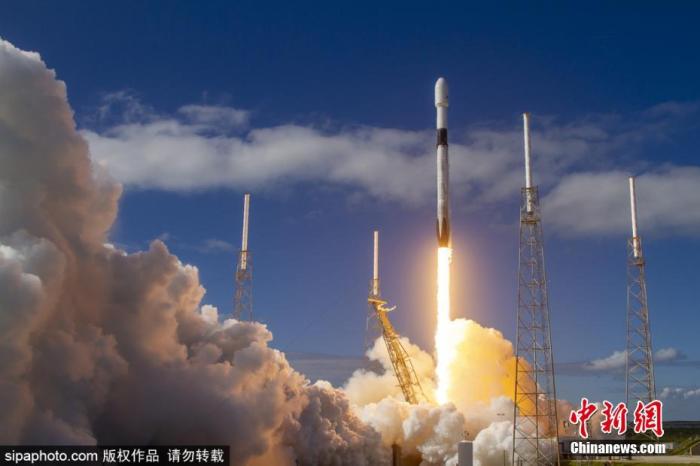Can the “Starlink Project” replace 5G? Expert: Complementary relationship with 5G
Can the low-orbit satellite communications represented by the “Starlink Project” subvert or replace 5G? Experts explained on the 15th that low-orbit satellite communications are currently complementary to 5G, and the future is a component of 6G.
At the 2nd China Internet Basic Resources Conference held in Beijing that day, Chen Shanzhi, vice president of China Information and Communication Technology Group and director of the State Key Laboratory of Wireless Mobile Communications, said that low-orbit satellite communications have outstanding advantages and obvious limitations.
It is understood that depending on the altitude of the orbit, the altitude of low-orbit satellites is 300-2000 kilometers, the altitude of medium-orbit satellites is 2000-35786 kilometers, the geostationary orbit is 35786 kilometers, and there are also higher altitude orbits.
The “Starlink” project has a total of more than 30,000 satellites, which can provide high-speed Internet services to any corner of the world. Sipaphoto copyright works are prohibited from reprinting
In 1987, Motorola proposed the “Iridium Satellite Project”. The project was put into use on November 1, 1998. 66 satellites are distributed on 6 polar orbit planes, which can provide telephone communication services at any location in the world (including the north and south poles). However, due to commercial reasons, the “Iridium Project” ended in failure.
Tesla CEO Elon Musk proposed the “Starlink Project” in 2015 and plans to launch 42,000 satellites to provide Internet services worldwide. In addition to the “Starlink Project”, OneWeb and Telesat also launched low-orbit satellite communications plans.
Chen Shanzhi said that from “Iridium” to “Starlink”, the rise of low-orbit satellite communications is mainly due to four factors: advancements in satellite launch technology; advancements in satellite manufacturing technology, materials, power supplies, and manufacturing; integrated circuits Technological advancement; advancement in communication technology.
Chen Shanzhi believes that the main advantage of satellite communications lies in its wide coverage. The current population coverage rate of mobile communication services is about 70%, but due to factors such as economic costs and technology, it only covers about 20% of the land area and less than 6% of the earth’s surface area.
Satellite communication can solve the coverage of air, ocean, forest, desert area and other sparsely populated areas, for air planes and drones, offshore oil wells and ships, forest fire prevention and wildlife video surveillance, power lines and railway inspections , Disaster relief scenes and other scenes provide communication guarantee.
But the limitations of satellite communication are also very obvious. Chen Shanzhi introduced that the spectrum efficiency of satellite communications is low. SpaceX’s Starlink downlink average spectrum efficiency is 2.7bit/s/Hz, which only reaches the 3G level, while the average spectrum efficiency of 5G is above 10bit/s/Hz.
Satellite communications construction and operating costs are much higher than mobile communications. In addition, satellite communication terminal antennas are larger, and the power consumption is higher than that of 5G mobile phones, and the energy consumption per bit is at least one order of magnitude worse than that of 5G mobile phones. Satellite signals will also cover areas where there are no users, resulting in ineffective coverage of areas and inability to cover indoors.
“Musk is a business prodigy. His disruptive innovation has greatly reduced the cost and threshold of launching satellites, but it does not subvert Shannon’s law of communication.” Chen Shanzhi said that satellite Internet positioning is not a 5G mainstream market, and has nothing to do with ordinary urban consumers, unless it is In places that cannot be covered by mobile communications.
Chinese companies have also launched the Hongyun project of low-orbit satellites and the Hongyan satellite constellation communication system. Chen Shanzhi believes that satellite communications should be integrated and developed with 5G. At present, the compatibility of China’s satellite communications and 5G is under preliminary exploration, which will lay the foundation for the organic integration of high, medium and low orbit satellite communications and ground mobile communications in the future 6G era.
Chen Shanzhi suggested that the industry should actively strive for frequency resources and orbital resources for satellite communications from the International Telecommunication Union. In terms of international cooperation, it focuses on participating in the formulation of international standards by standards organizations such as 3GPP. In terms of domestic cooperation, the focus is on promoting “cross-border” cooperation between the commercial aerospace industry, the mobile communications industry, and the integrated circuit industry.
Source: China News Network



